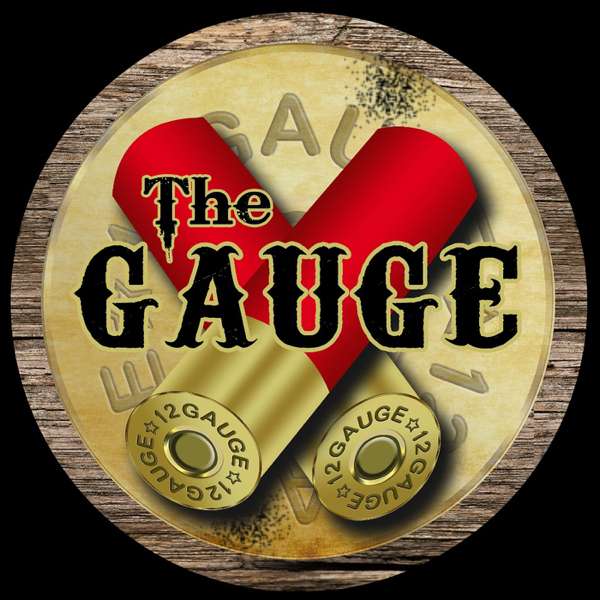Money is changing, but where do we go from here? Through high profile interviews and thoughtful analysis, join CoinDesk's Michael Casey and Sheila Warren of the World Economic Forum as they explore the connections between finance, human culture and our increasingly digital lives.
In this inaugural episode media studies professor Lana Swartz and multimedia artist Nicky Enright join the discussion.
Sushi, Hotdogs, Yams, Shrimp.
The whimsical, food-obsessed names of DeFi protocols are antithetical to the stodgy imagery of the mainstream financial system they seek to disrupt. Banks’ memes, by contrast, skew toward strength and durability. (Think of the rampart lions and Roman columns at the entrances of bank branches in old parts of London, New York or Paris.)
DeFi’s critics say the silly names betray the fact it’s merely a fad and a game – or worse, a scam. It’s all imaginary, they say. It’s not real.
The problem with that perspective is that all aspects of money, including the financial systems built on top of it, are imaginary.
And, in case you’re wondering, that’s a feature, not a bug.
Israeli historian Yuval Harari calls money “the most successful story ever told,” even more important to the evolution of society than religion, corporations and a host of other human-imagined institutions. Like those concepts, money’s power hinges on the collective adoption of a common belief system. It takes a set of mutually understood rules and gives them symbolic representation in a token we call a currency. In exchanging that token, we reach agreements that reflect those rules and so enable commerce, collaboration, value creation and, ultimately, civilization.
Storytelling and cultural creation have always been integral to how society fosters this belief system, how we’ve forged communities around currencies. It’s why representations of money and the conversations around it are rich with iconography, foundational myths and stirring language.
This process of collective imagination has become firmly tied to another powerful imaginary concept: the nation-state. This combination has been so effective that it has survived the introduction of new technologies and tokens over time. We’ve gone from shells to coins to banknotes to checks to credit cards to Venmo, and each time we’ve just accepted that a new transfer vehicle can convey the same rules and values we’ve always attached to our national currencies.
This is a useful lens to apply to the many new ideas for money bubbling up in the crypto world. Whether it’s bitcoin’s bid to become a digital gold-like currency or the fight between Uniswap and SushiSwap to dominate liquidity in DeFi’s lending markets, the semiotic process for creating memes and stories is vital to the establishment of a new system.
National elites used such methods to get us to collectively imagine a bank-centric system of fiat currencies. Those of us who want to change that need to do something similar. We need to reimagine money.
Imagined Communities
If you have a $100 bill in your wallet, take a good look at it.
On one side, there’s Ben Franklin’s balding head and torso, behind which are a quill, an inkwell with the Liberty Bell superimposed onto it, and an extract from the Declaration of Independence. There are also the seals of the U.S. Treasury and the Federal Reserve, the signatures of the Secretary of the Treasury and the Treasurer, a serial number and other identifying numerals.
On the other, we see Independence Hall in Philadelphia, where Franklin and other Founding Fathers signed the declaration, along with the words “In God We Trust.” On both sides, the number 100 appears numerous times in and around a highly ornate border.
Combined with cotton threads and watermarks, the baroque design helps make the note difficult to counterfeit. But more importantly, the imagery appeals directly to patriotism. It’s all associated with the nation-state to which the dollar, we are encouraged to believe, is indelibly linked.
Now think about the actual value of the note, by which I mean the physical piece of paper. You could use it as a bookmark, maybe, make a paper plane out of it, or write a very small amount of information in very small print on it. But none of those uses add up to $100 in utility.
A banknote’s value comes almost entirely from our shared imagination, a commonality of beliefs fed by centuries of cultural production that forges a type of community. It’s only because the payer and the payee share those beliefs that this piece of paper can function as an instrument for clearing that community’s debts.
Each tribe of cryptocurrency advocates is endeavoring to create the same sense of community and belief around its preferred token. How they attain that is a cultural challenge.
What’s Real?
In November 2014, I created a video for The Wall Street Journal with Nicky Enright, a multimedia artist. We filmed him walking the streets of the Diamond District in New York’s Midtown as he wore an A-frame sandwich board and held a wad of “Globos,” his personal currency, in hand. The beautifully ornate notes were on sale for a $1, he told passersby, in a special two-for-one deal.
The interactions with people were fascinating. One of the most common questions was, “Is it real?” Enright’s answer was always something like, “Of course it’s real. You can see and hold it, right?” As a guest on this week’s inaugural Money Reimagined podcast, Enright reflected on those exchanges, noting that “people will question the Globo in a way that they rarely, if ever, question their own currency” and yet the very same questions about what is “real” could be applied to the purely symbolic value of the dollar.
The pertinent question for cryptocurrency advocates is: How do the purveyors and believers in a particular currency similarly get enough people to believe in it, to view it as “real?” And that’s again where the cultural conversation comes in.
It’s why Bitcoin’s culture is filled with ideas, phrases and iconography that help build community. Think of the word “HODL,” or the concept that Bitcoin is “The Honey Badger of Money,” or the almost religious devotion to the mysterious founding father, Satoshi. (By the way, it’s irrelevant that these ideas, like DeFi’s, seem frivolous to traditionalists. They are appropriately in line with the meme culture of the digital age, and consistent with the liberal conventions that internet culture unleashed, as names like Yahoo! and Google became corporate mainstays.)
Community = Governance
University of Virginia media studies professor Lana Swartz, author of the newly published New Money: How Payment Became Social Media, has some thoughts on all this. As the second guest on this week’s podcast, she reflected on the very early research that she and two colleagues did into Bitcoin’s culture in 2013. At that time, she said, “there was a real fixation on the idea that Bitcoin would be free from human institutions, free from human foibles and free from the need for human governance… But then all these early Bitcoin people ever really did was to talk and create community, and create ways to govern themselves, and create ways to think about this project.”
It’s a great insight. Money is inseparable from community, and community is about values, the expression of which involves governance. (Not government per se, but governance.)
This brings us full circle to DeFi, where tribes conduct meme warfare on Twitter and elsewhere to promote their tokens. Each of those tokens is tied to a protocol, which offers a different form of governance.
The difference with traditional money is that the enforcement of each token’s particular governance model comes via a decentralized network rather than the centralized institutions of a nation-state.
That shift is what makes it so promising. But it’s also why the cultural creation process is so challenging, as it must compete with the giant mindshare that traditional finance occupies. It’s why the meme-ing must continue.
The End of Wall Street As We Know It?
Hats off to Bloomberg’s Joe Weisenthal for coming up with a killer graph. Sadly, I’m using that descriptive literally. The chart, which appeared Tuesday in Bloomberg’s daily “Five Things to Start your Day” newsletter, maps the reservations at New York restaurants recorded by the website OpenTable and subway turnstile receipts from the Metropolitan Transportation Authority, against the price of shares in SL Green, a real-estate investment trust focused on Manhattan office space. COVID-19 has done a number on all three.
Source: Bloomberg
I include this here, because when thinking about the future of Manhattan real estate, it’s hard not to think about the future of Wall Street. Banks, brokerages and other financial institutions are giant contributors to the city’s commercial rents, occupying large open-plan trading areas on multiple floors of some of NYC’s prime real estate. But in the COVID-19 era, banks have learned that, with the help of new low-latency connectivity packages, their traders can work pretty well from home, offering the prospect that the firms can save millions in rents if they pare back their footprint in the city.
An exodus from New York by bankers, traders and brokers would mark an end to an era. Hollywood’s movies about testosterone-fueled trading floors will become period pieces. The bigger question is what it means for the idea of Wall Street as a New York institution and, by extension, for the city’s outsized role in the regulation of the global financial system.
There are plenty of reasons for banks to maintain a legal residence in New York. Most important, the Federal Reserve Bank of New York has a unique role within the Fed’s monetary system, as it conducts the open-market operations by which the central bank implements monetary policy. To act as a counterparty with FRBNY in those trades and gain access to that vital flow of monetary liquidity, banks need, at the very least, a capital markets subsidiary domiciled in New York. Their presence for that purpose in turn gives local regulators such as the New York Department of Financial Services a critical role in world finance.
But it’s not hard to imagine that a physical downgrading of banks’ physical presence in New York could, over time, degrade the city’s dominance. Will the rest of the U.S. continue to grant NYC its gatekeeping role?. And as central banks, potentially armed with digital currencies, move to expand the range of counterparties they deal with to include non-banks such as large companies and municipalities, New York’s centrality in the process could be further diminished. It’s yet another way in which the seismic events of 2020 could prove are setting it up as a turning point year for the world of finance.
Further reading:
Here in Venezuela, Doctors Struggle to Access Aid From Crypto Platform By José Rafael Peña Gholam
Digital Euro Would Provide Alternative to Cryptos, ECB President Lagarde Says By Dan Palmer
Iran Is Ripe for Bitcoin Adoption, Even as Government Clamps Down on Mining By Sandali Handagama
The Currency Cold War: Four Scenarios by Jeff Wilser
Ocean Protocol and Balancer Want to Do for Data What Uniswap Did for Coins by Ian Allison
How Small Business Can Achieve 'Economies of Scale' by 2030 by Paul Brody
See Privacy Policy at https://art19.com/privacy and California Privacy Notice at https://art19.com/privacy#do-not-sell-my-info.

 Our TOPPODCAST Picks
Our TOPPODCAST Picks  Stay Connected
Stay Connected







